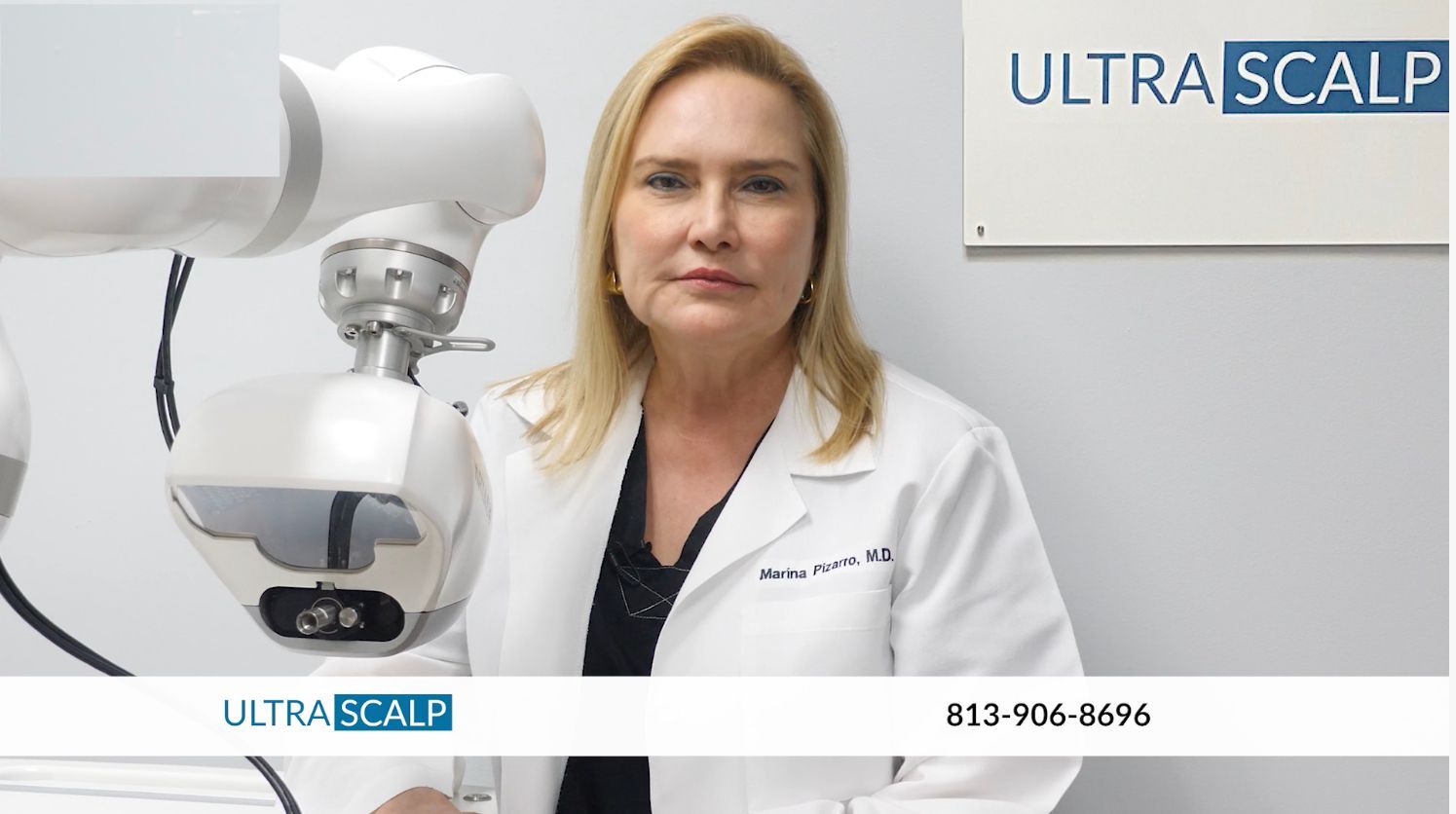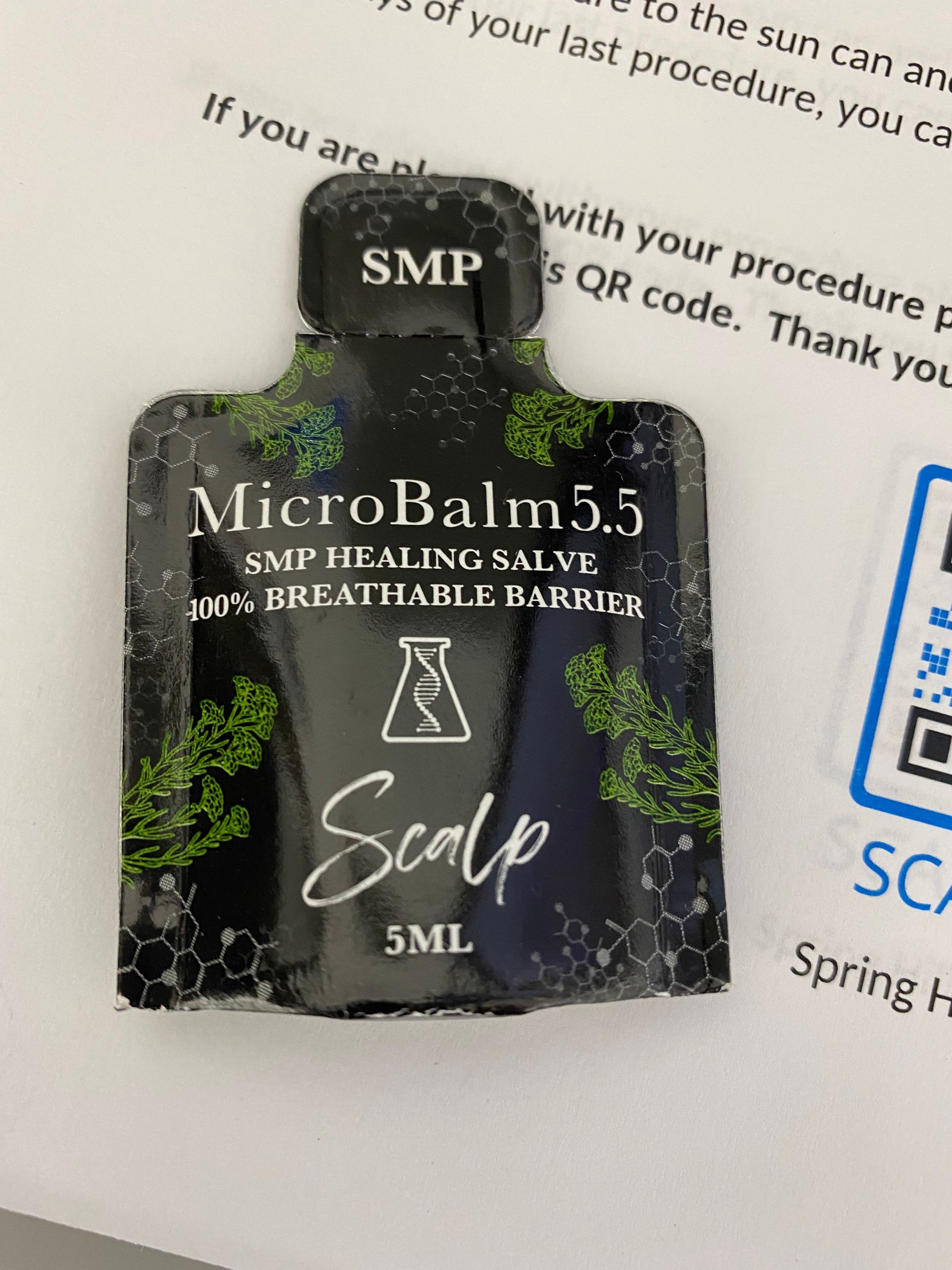Why is My Hair Falling Out in Patches? Unveiling the Surprising Culprits
Introduction: Understanding Hair Loss
Why is my hair falling out in patches? If this question has been haunting you, you're not alone. Many men and women in Tampa, Florida, are grappling with the same concern. Hair loss, or alopecia, can be a distressing experience, affecting your self-esteem and confidence levels. It can manifest in various ways, from gradual thinning to patchy bald spots, and can be triggered by numerous factors. This article aims to shed light on what causes hair to fall out in patches, taking you one step closer to finding an effective solution and regaining control of your hair health.
In the following sections, we will delve into the basics of hair loss, its different presentations, potential risk factors, preventive measures, and treatment options, including the role of Ultra Scalp Micropigmentation Tampa. So, let's begin this enlightening journey to help you understand why your hair is falling out in patches and how you can combat it.
The Basics of Hair Loss
Before we can address the problem, it's crucial to understand the basics. Hair loss, also known as alopecia, is a common issue that plagues millions of individuals worldwide. But what exactly causes it? And how can we differentiate between temporary hair loss and a more permanent condition? Let's break it down.
What is Alopecia?
Alopecia, in layman's terms, is simply the medical terminology for hair loss. It can affect just your scalp or, in more severe cases, your entire body. Hair loss can be temporary or permanent, and it can be caused by a myriad of factors, including heredity, hormonal changes, medical conditions, and aging.
Temporary vs Permanent Hair Loss
Temporary hair loss can be due to factors like stress, dietary changes, or certain medical treatments like chemotherapy. In contrast, permanent hair loss often has more deep-seated causes such as genetics, hormonal changes, or specific medical conditions. It's important to consult with a medical professional to determine the type of hair loss you're experiencing, as treatment approaches can vary significantly.
The Role of Heredity in Hair Loss
Genetics play a crucial role in hair loss. Hereditary hair loss with age, also known as androgenetic alopecia or male-pattern baldness, is the most common cause of baldness. This type of hair loss usually happens when individuals are in their late teens or early 20s, but exceptions exist.
Hormonal Changes and Hair Loss
Hormonal changes are another significant contributor to hair loss. Conditions like pregnancy, menopause, or imbalances in thyroid hormones can lead to temporary or permanent hair loss. An androgen called dihydrotestosterone (DHT) has been linked to male pattern baldness, causing hair follicles to shrink and eventually die over time.
Medical Conditions that Cause Hair Loss
Certain medical conditions can also lead to hair loss. Alopecia areata is an autoimmune disease that causes hair to fall out in one or more small patches. Other conditions such as lupus or diabetes could also potentially lead to hair loss.
Aging and Hair Loss
Finally, a key factor in hair loss is simply aging. As we grow older, our hair naturally begins to thin and fall out. While this is a normal part of the aging process, for some individuals it can be more pronounced, leading to significant hair loss or baldness.
Understanding these basic aspects of hair loss is the first step in managing it effectively. The next sections will take you through the different presentations of hair loss, risk factors, and how to prevent and treat this common condition.
Different Presentations of Hair Loss
Hair loss can be a quiet thief, subtly stealing away your strands over time. Or it might be a brash bandit, causing sudden, noticeable bald spots. Let's explore the four main ways hair loss can present itself.
Gradual Thinning of Hair
The first and most common type of hair loss is gradual thinning on top of the head. This pattern often comes with age, and it can affect both men and women. Men may notice a receding hairline that begins at the forehead, taking on an "M" shape. Women, on the other hand, might see a broadening of the part in their hair. A specific form of this, known as frontal fibrosing alopecia, manifests as a receding hairline and primarily affects older women. Early treatment can help prevent significant, permanent baldness.
Circular or Patchy Bald Spots
Some individuals might experience hair loss in circular or patchy bald spots on the scalp, beard, or eyebrows. This is often a symptom of a condition known as alopecia areata. The hair loss can occur suddenly, and the bald patches may overlap. Before the hair falls out, the skin might become itchy or painful.
Sudden Loosening of Hair
Imagine combing, washing, or even just gently tugging at your hair and ending up with handfuls of it. This sudden loosening of hair can be triggered by a physical or emotional shock. Although it can lead to overall thinning of hair, it's generally temporary.
Full-Body Hair Loss
Some medical conditions and treatments, such as chemotherapy for cancer, can cause an extreme form of hair loss that affects the entire body. This can be quite distressing, but the good news is that the hair usually grows back after treatment ends.
Hair loss is not one-size-fits-all; it can show up in different forms and intensities. The important thing is to be aware of these patterns, so you can take action early. Because, whether it's a subtle shift or a significant loss, it's your hair, and it matters.
Risk Factors for Hair Loss
One of the many mysteries of our bodies is why hair loss happens to some people and not others. Various factors can influence the likelihood of experiencing hair loss. It's time to unveil the surprising culprits behind it.
Family History of Balding
Just like your eye color or height, the trait for balding can be passed down in your genes. If you have parents or grandparents who've experienced hair loss, you might notice a similar pattern in your own life. This is known as hereditary hair loss, the most common cause of baldness.
Age and Hair Loss
Hair loss can be a normal part of aging. As we age, hair growth slows, and the follicles get smaller, producing shorter, thinner strands. This doesn't mean that everyone will experience hair loss as they grow older, but the chances increase with age.
Significant Weight Loss and Hair Loss
Sudden or significant weight loss can stress your body and cause hair loss. This is often temporary, but it can be quite alarming to see clumps of hair falling out after a significant drop in weight.
Medical Conditions and Hair Loss
Certain medical conditions can cause hair loss. These include thyroid issues, alopecia areata (a disease where your immune system attacks your hair follicles), and scalp infections like ringworm. Additionally, hair loss can be a side effect of some medical treatments, such as chemotherapy for cancer.
Stress and Hair Loss
Stress has a significant impact on our bodies and can lead to temporary hair loss, known as telogen effluvium. This condition pushes large numbers of hair follicles into a resting phase, and within a few months, the affected hairs may fall out suddenly when simply combing or washing your hair.
Poor Nutrition and Hair Loss
Your hair needs a variety of nutrients to grow and stay healthy. Diets deficient in iron, protein, and other nutrients can lead to hair loss. Additionally, eating disorders like anorexia or bulimia can starve your body of these essential nutrients and result in hair loss.
Hair loss can feel like an insurmountable problem, but understanding the risk factors can help you get a handle on it. It's crucial to remember that many causes of hair loss are temporary or treatable. So, if you're noticing changes in your hair, it may be time to talk to a professional about your options, including services like Ultra Scalp Micropigmentation Tampa, which can help restore the appearance of fuller hair.
Preventing Hair Loss
Preventing hair loss may seem like a daunting task, but it doesn't have to be. By implementing some simple lifestyle changes and taking a proactive approach towards hair health, you can keep your mane looking its best. Here are some practical measures you can take to prevent hair loss.
Gentle Hair Care
Handling your hair with care is your first line of defense against hair loss. According to the Mayo Clinic, it's important to use a detangler and avoid tugging when brushing or combing, particularly when your hair is wet. A wide-toothed comb can help prevent pulling out hair. Be mindful of the hair products you use and ensure they are gentle and free from harsh chemicals.
Avoiding Harsh Treatments
Your hair might be your crown, but treating it like a science experiment can lead to unwanted hair loss. The Mayo Clinic advises against harsh treatments such as hot rollers, curling irons, hot-oil treatments, and permanents. Additionally, hairstyles that apply tension on your hair, like those involving rubber bands, barrettes, and braids, should be limited.
Protecting Hair from Sunlight
Just as your skin needs protection from the harmful UV rays of the sun, so does your hair. Prolonged exposure to sunlight and other sources of ultraviolet light can harm your hair and contribute to hair loss. Wear a hat or use a hair care product with sun protection when spending extended periods in the sun.
Quitting Smoking
Smoking is not only bad for your lungs and heart, but it can also be detrimental to your hair. Some studies show an association between smoking and baldness in men, as mentioned by the Mayo Clinic. Therefore, quitting smoking can be a step towards preventing hair loss.
Using Cooling Caps During Chemotherapy
For those undergoing chemotherapy, hair loss can be a distressing side effect. In such cases, cooling caps can be an effective preventative measure. These caps can reduce your risk of losing hair during chemotherapy by lowering the temperature of your scalp and reducing the amount of chemotherapy drugs reaching your hair follicles.
Remember, hair loss can be a complex issue with various causes, and these preventative measures may not work for everyone. If you're experiencing hair loss, consult with a hair loss specialist to explore further treatment options. Services like Ultra Scalp Micropigmentation Tampa offer non-surgical solutions to hair loss, helping you regain your confidence and embrace your appearance.
Diagnosing and Treating Hair Loss
Hair loss can feel like a personal battle, but it's important to remember that you don't have to fight it alone. There are professional resources and effective treatments available to help you manage and even reverse the effects of hair loss. In this section, we will explore how doctors diagnose hair loss, the importance of early treatment, and how Ultra Scalp Micropigmentation Tampa can play a vital role in your hair loss treatment journey.
How Doctors Diagnose Hair Loss
Hair loss diagnosis starts with a thorough evaluation of your medical history, physical examination of your scalp, and possibly a few diagnostic tests. Doctors may perform a pull test, where they gently tug on a few strands of hair to determine how easily they come out. This helps measure the severity of your hair shedding. Another test might be a scalp biopsy, where a small piece of scalp skin is removed and examined under a microscope. This can help identify infections or diseases that may be causing your hair loss. Blood tests may also be conducted to look for underlying medical conditions contributing to hair loss, like thyroid disorders or autoimmune diseases.
Early Treatment to Prevent Permanent Baldness
Detecting and addressing hair loss at its onset is crucial in preventing permanent baldness. One common approach is the use of medications like minoxidil (Rogaine) or finasteride (Propecia) that can slow hair loss for some people and help stimulate new growth in others. However, these treatments don't work for everyone, and they come with potential side effects. In such cases, non-pharmaceutical options might be a more suitable choice.
The Role of Ultra Scalp Micropigmentation Tampa in Treating Hair Loss
One such innovative, non-surgical solution is Scalp Micropigmentation (SMP), offered by Ultra Scalp Micropigmentation Tampa. This treatment uses detailed micro-needles to deposit pigment into the scalp, creating the appearance of tiny hair follicles. This not only helps thicken and restore the look of fuller hair, but also helps camouflage any existing bald spots.
SMP is an effective and affordable solution for both men and women experiencing hair loss. It can restore a receding hairline, create the look of a full close cut head of hair, and even simulate more density for thinning hair. However, it's important to understand that a close cut must be maintained for this treatment to look natural.
At Ultra Scalp Micropigmentation Tampa, the primary goal is to provide personalized solutions tailored to meet your specific hair loss needs and help you regain your confidence. It's one step, but often a significant one, in your journey to managing hair loss effectively.
Living with Hair Loss
Living with hair loss can be a challenging journey, especially when you're constantly reminded of your changing appearance in the mirror. However, it's vital to remember that you're not alone in this struggle, and there are resources and strategies available to help you cope and adapt.
Emotional Challenges of Hair Loss
Hair loss can result in a wide range of emotional challenges. Feelings of embarrassment, loss of self-esteem, and even depression are common reactions. The physical change can drastically alter your self-image, leading to a significant psychological impact. It's vital to acknowledge these emotions and seek help when necessary. Professional counseling or therapy can provide beneficial tools to navigate these feelings and build resilience.
Support Groups for Individuals with Hair Loss
Feeling connected to others who are going through similar experiences can offer tremendous relief. Support groups, both online and offline, can serve as a safe space to share experiences, garner advice, or simply listen to others going through the same struggles. Mayo Clinic, for instance, offers an online patient community called Mayo Clinic Connect, where individuals can participate in discussions about managing symptoms of various conditions, including hair loss.
Lifestyle Changes to Manage Hair Loss
In addition to seeking emotional support, there are several lifestyle changes that you can make to manage hair loss and potentially slow its progression. Some of these changes include being gentle with your hair by avoiding harsh treatments such as hot rollers, curling irons, and certain hairstyles that put tension on your hair. Protecting your hair from sunlight, quitting smoking, and maintaining a healthy diet can also contribute to hair health.
If you're undergoing chemotherapy, consider asking your doctor about a cooling cap. This device can help reduce the risk of losing hair during chemotherapy.
Remember, every individual's experience with hair loss is unique. What works for one person may not work for another. It's all about finding what best suits your individual needs and lifestyle. And while hair loss can be a challenging experience, it does not define who you are or your worth. With the right resources and support, you can navigate this journey with resilience and grace. And here at Ultra Scalp Micropigmentation Tampa, we are committed to helping you every step of the way.
Taking Control of Your Hair Loss
Losing your hair, whether it's in patches or a general thinning, can feel like a loss of control over your own body. But remember, you're not alone in this. In fact, the American Hair Loss Association claims that male pattern baldness accounts for more than 95% of hair loss in men. And it's not just men who are affected. Women too can experience significant hair loss as they age or due to hormonal changes.
However, it's important to remember that hair loss is not a verdict. It's a condition. And like any other condition, it can be managed and treated.
The first step is understanding the cause of your hair loss. Is it due to a hereditary condition like male pattern baldness? Or could it be a symptom of a medical issue that needs to be addressed? Having a clear diagnosis is key to finding the right treatment.
The second step is exploring your treatment options. There's a wide array of solutions available, from over-the-counter products to medical treatments. One particularly effective method is scalp micropigmentation, a non-surgical treatment that can create the appearance of fuller hair.
The third step is making lifestyle changes to help prevent further hair loss. This can include everything from being gentle with your hair, avoiding harsh treatments, protecting your hair from sunlight, to quitting smoking.
Finally, and perhaps most importantly, is the step of embracing yourself as you are. Hair or no hair, you are a unique individual with your own strengths and beauty. Hair loss can be a challenging journey, but it can also be an opportunity for growth and self-acceptance.
At Ultra Scalp Micropigmentation Tampa, we understand the emotional toll hair loss can take. That's why we're dedicated to providing solutions that help you regain your confidence. Remember, you are more than your hair, and you have the power to take control of your hair loss.
In the end, it's not about the hair you've lost, but the confidence and self-esteem you've gained. After all, true beauty emanates from within. So, take control, and embrace your journey with hair loss. We're here to help every step of the way.





